In honor of National Farmer’s Day, we share some of our favorite illustrations of the people who worked the farms of America in the 1940s.
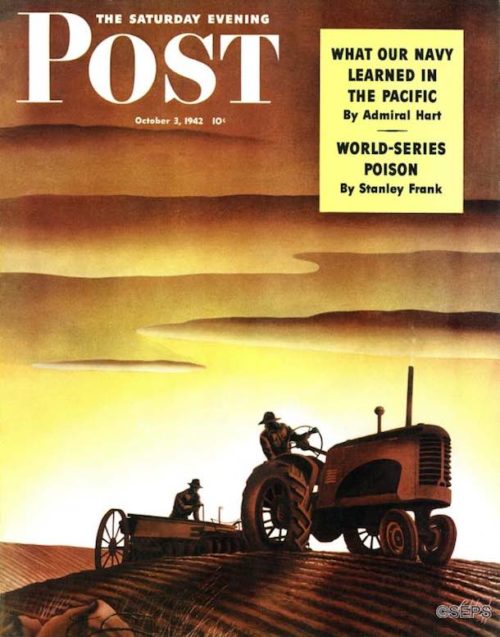
Arthur C. Radebaugh
October 3, 1942
In a year when many of the Post covers featured war-related images, this glowing, pastoral scene must have been a soothing one to readers. This painting reflects the regionalist style that was popularized by artists such as Thomas Hart Benton and Grant Wood. However, most of Radebaugh’s paintings were more futuristic; he created numerous illustrations for the airline and automotive industries.
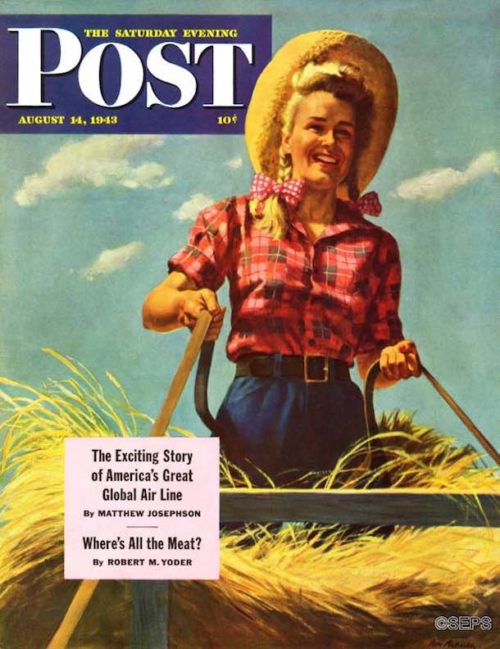
Ray Prohaska
August 14, 1943
Although he painted several interior illustrations for the Post, this was Ray Prohaska’s only cover. The woman atop the wagon with her straw hat, polka-dot hair ribbons, and plaid shirt is the quintessential farm girl. As with the previous cover, this happy scene gave readers a respite from the war.
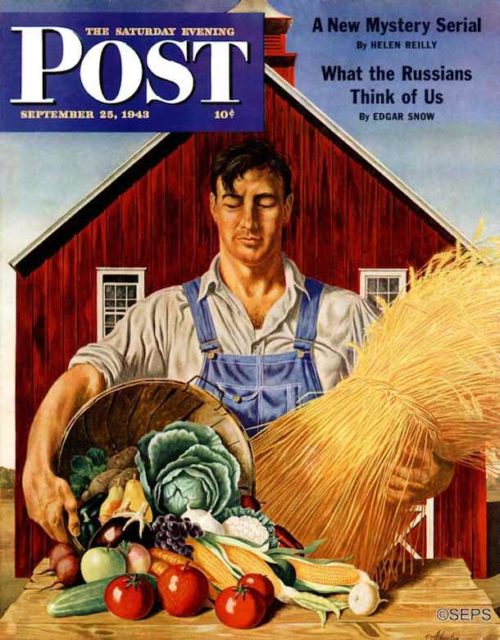
John Atherton
September 25, 1943
John Atherton painted 40 covers for the Post. Many were bold, architectural compositions of industry — steel mills, grain elevators, ore mines, and lumber yards. Atherton painted a number of more pastoral scenes, such as this farmer with his cornucopia of fruits, vegetables, and grains.
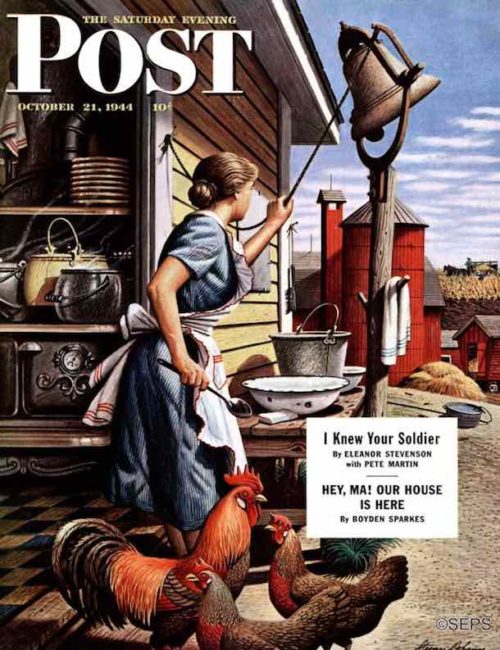
Steven Dohanos
October 21, 1944
Stevan Dohanos, inspired by Norman Rockwell’s talent, depicted everyday life in the 123 covers he created for the Post. Dohanos was also busy aiding the war effort by painting recruitment posters and wall murals for federal buildings. He also designed stamps for the federal government, starting during the Roosevelt administration, and staying in the profession the rest of his life.
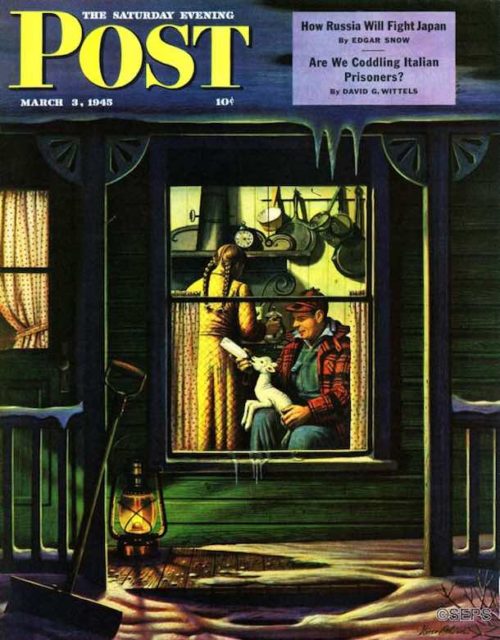
Stevan Dohanos
March 3, 1945
Stevan Dohanos made pencil studies of the lamb in this painting early in December on the farm of Raymond Platt, in Redding, Connecticut. Before he found his cover subject, however, he made a number of sketches in a drafty shed where lambs and ewes of all ages were quartered. “They stepped on my sketches and equipment; they pushed me all over the shed,” says Mr. Dohanos. “In fact, they acted just like people.”
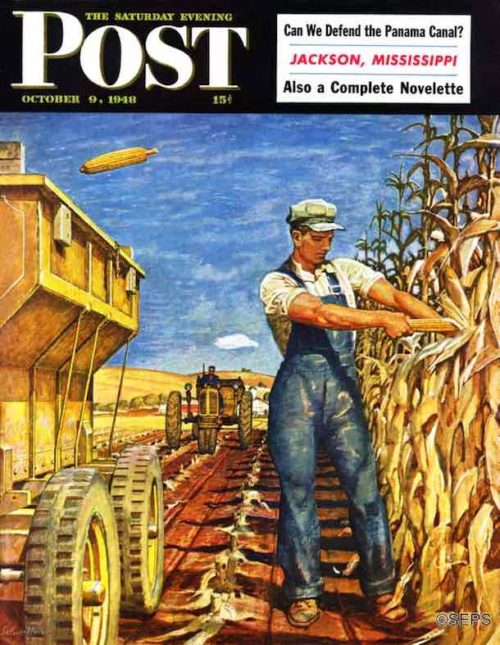
Mead Schaeffer
October 9, 1948
This Mead Schaeffer cover shows corn being picked by the “bang-board” method, which allowed a man to throw ears into the wagon without looking, because they would bang against a high board at the far side of the wagon and drop in. By 1948, most big farms used mechanical corn pickers, including the Lawton, Iowa, farm of Louis Peterson, the setting of this picture. The mechanical picker had already been used on much of the field, as the rows of stubble indicate, but the day Schaeffer was there, the machine was busy elsewhere. Farmer Peterson needed a little corn for his hogs. He got it the bang-board way—and Schaeffer got this cover.
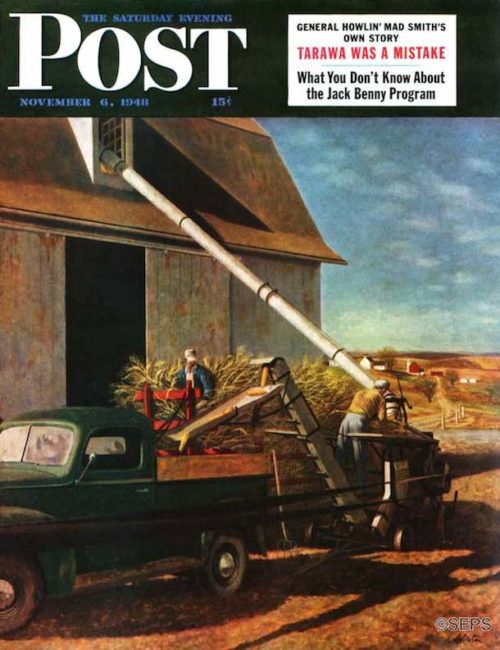
John Atherton
November 6, 1948
John Atherton’s cover painting depicts life on a farm near Madison, Wisconsin. The machine is a husker and shredder, which sends the husked ears of corn into the waiting truck, chops the stalk and blows the choppings into the mow, like hay. The power comes from a tractor offstage to the left.
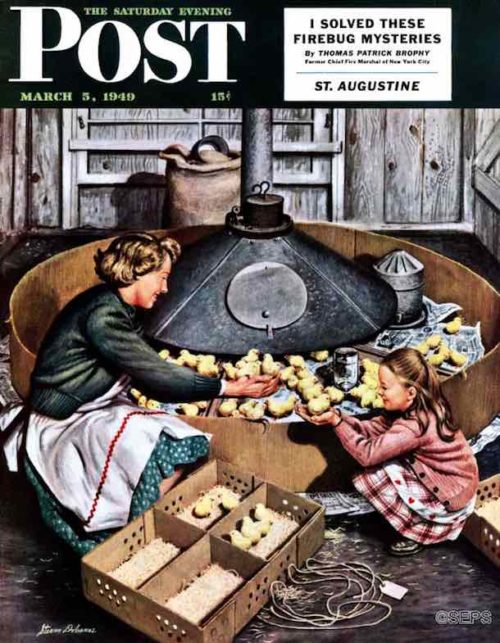
Stevan Dohanos
March 5, 1949
Stevan Dohanos felt apologetic about the request he made in a hatchery in Wallingford, Connecticut. “What I’d like to paint,” he said, “is baby chicks of one particular color. It’s a color people like to see on a bleak March day—a kind of pale lemon yellow.” It didn’t faze the hatchery men. “We’ve got about any shade you like,” they said, and began showing stock. The ones Dohanos chose—he thinks—were White Leghorns. The artist ended up pretty proud of his new knowledge. “That’s a coal-stove brooder,” he said professionally, “and technically correct. It has to be round. If it were square, you see, the chicks would get into the corners and crush themselves.”
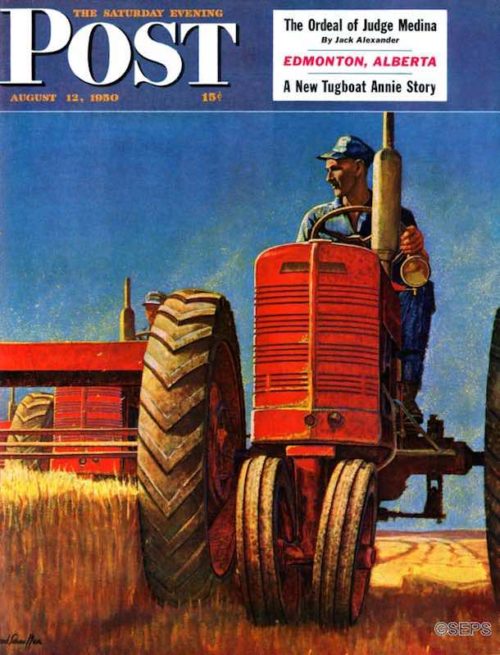
Mead Schaeffer
August 12, 1950
This cover is meant to coincide with the wheat harvest in the famous North Dakota-Minnesota Red River Valley. Artist Schaeffer, conditioned to small patches of Eastern wheat, was amazed by the endless golden seas of Midwestern grain. One day, in the fields, Schaeffer wondered where everybody’s lunch was coming from, and an airplane appeared, bringing same.
Become a Saturday Evening Post member and enjoy unlimited access. Subscribe now
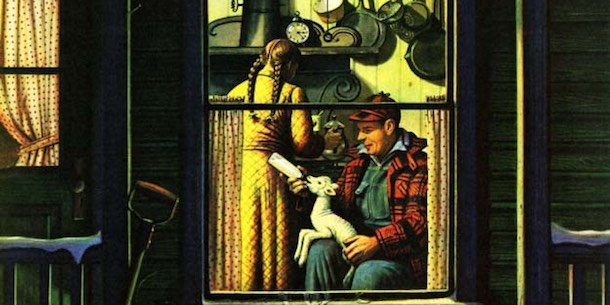

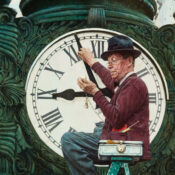
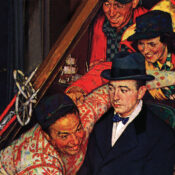
Comments
They’re wonderful, every single one. Although, I was born 1948, they remind me of simpler times. Love your magazine. I’ am a quilter and as a fiber artist I could see a quilt with these wonderful images.